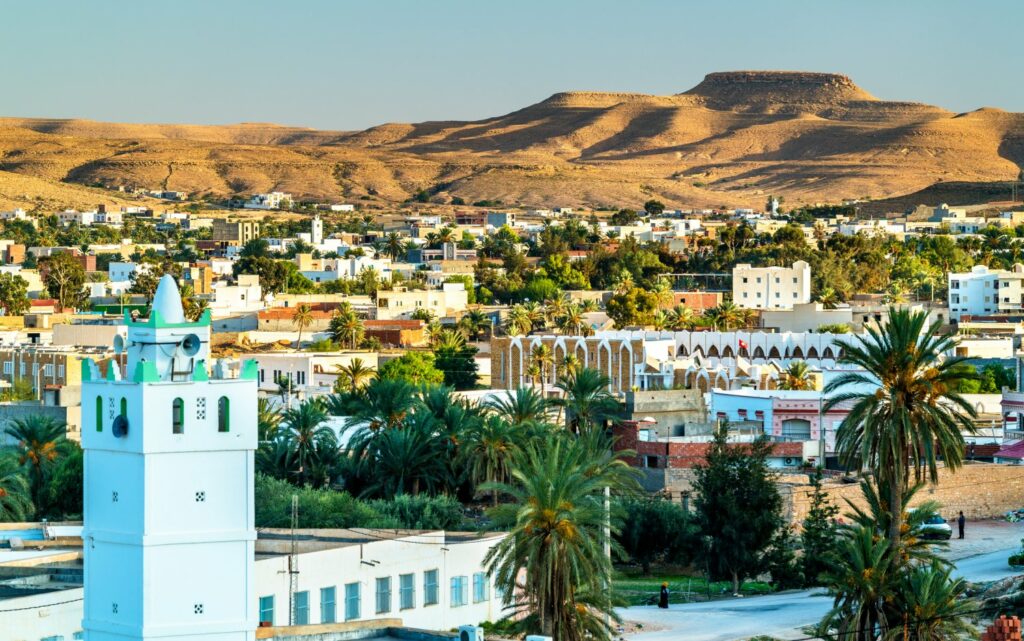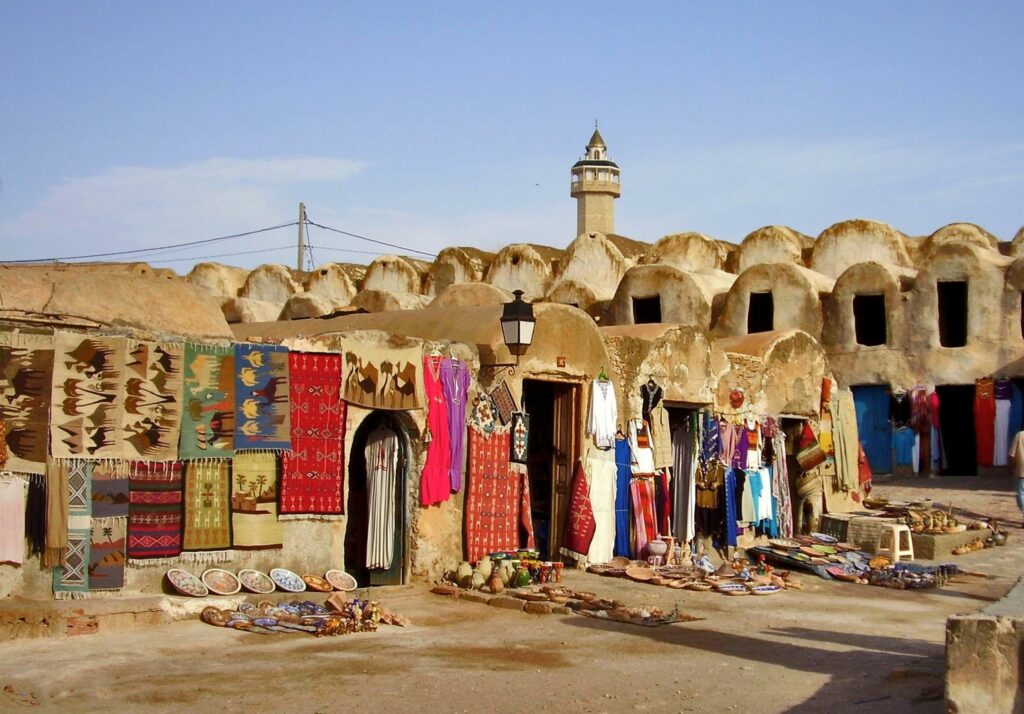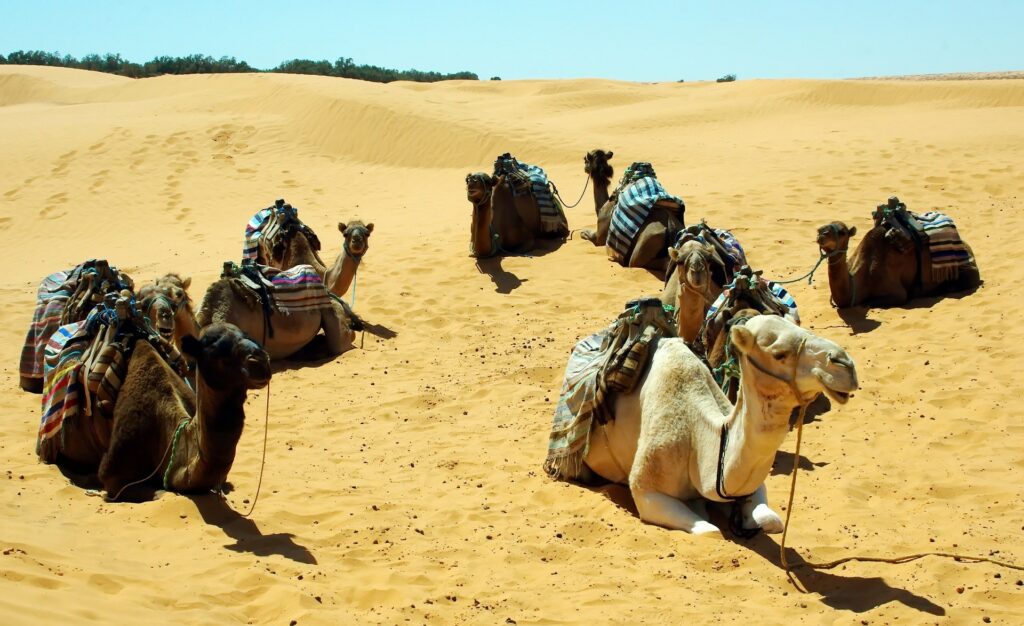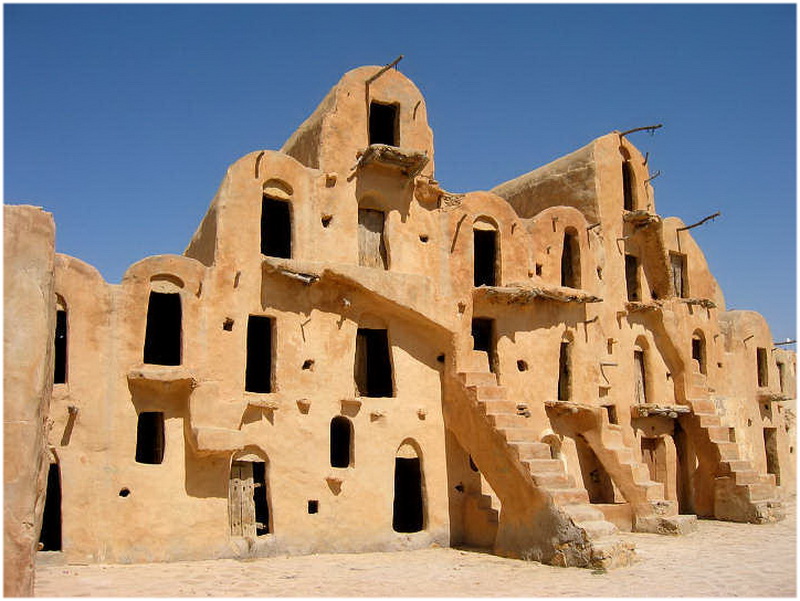Tataouine/Titaouan

The desert is evident at its peak in Tataouine and Medenine. A vast stone plain that opens up to wonderful natural scenes of mountains, deserted plateaus, cliffs and rocky peaks. In this majestic scene, amazing buildings stand out: the palaces and fortified warehouses of the desert Bedouins. The same admiration is renewed for the ancient Berber villages tucked into the mountaintops, such as Chenni and Doueirat. Tataouine is truly a region of breathtaking natural scenery and unique customs and traditions.Tataouine Governorate is located in the southeast of Tunisia. It is bordered in the north by the state of Medenine, and by Kebili, to the east and south by the Libyan country and to the west by the Algerian country.Tataouine Province is an Amazigh name and is a plural form that means “the eye”. It is one of the most ancient and unique springs (Tit), the areas in which traces and remains of dinosaurs of various types were recently discovered, specifically in the village of Qasr al-Haddada, the geo-tourism route in Kambout, and the mountainous regions, as a result of contemporary geological and archaeological studies.The state’s area is 38,889 km² and includes 8 delegations, 7 municipalities, and 64 deanships. The population is 152,500 residents.



The most important characteristics of the state:
Geographical and natural characteristics:
The state of Tataouine is distinguished by its vast area, the multiplicity of its natural resources (oil and gas, groundwater, construction materials), the multiplicity of its historical and geological sites and archaeological monuments, and the diversity of its natural spaces (palaces, mountain villages, oases and reserves).
*Infrastructure: It consists of a network of 43% paved roads, an industrial area of 12 hectares, a regional communications and radio network whose broadcast covers the entire southeastern region.
*Economic characteristics: The region’s economy is based on the agricultural sector due to inherited traditions in raising livestock, planting fruit trees, and controlling flowing water. Migration also represents an essential resource in addition to a promising tourism and cultural activity.